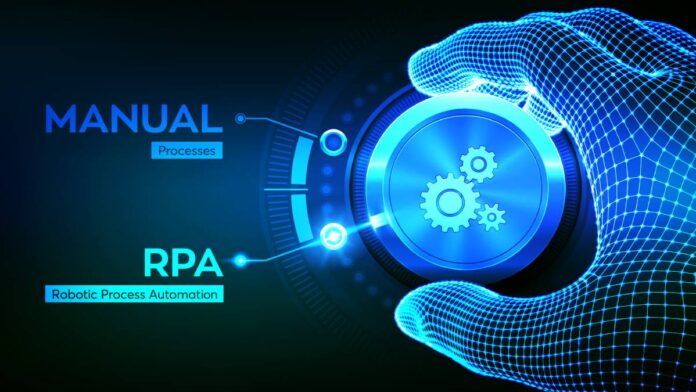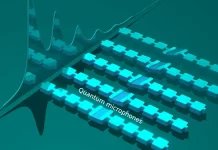
When advanced technologies like AI and IoT are paired with automation, they have the potential to jump-start businesses, automate them on full scale and revitalize supply chains. The next level beyond regular automation is referred to as hyper-automation. Thus, future customers will be the first humans to touch more than 20% of all items produced using hyper-automation technology. In this article, learn what hyper-automation is, various technologies, tools, or platforms in this technology, and its advantages and disadvantages.
Contents
What is Hyper-Automation?
Hyper-automation is a business-driven, systematic method to rapidly identify, validate, and automate as many business and IT activities as possible. According to Gartner, hyper-automation refers to using advanced technologies, such as artificial intelligence (AI) and machine learning (ML), to increasingly automate processes and complement humans.
According to Gartner, Hyper-automation extends over a range of tools that can be automated but also relates to the complexity of the automation (i.e., discover, analyze, create, automate, measure, monitor, reassess. These objectives are met by the Nividous hyper-automation platform, which manages and executes end-to-end business operations through three major components: Robotic Process Automation (RPA), Artificial Intelligence (AI), and Business Process Management Systems are all examples of business process management systems (BPMS).
Notably, the Nividous platform integrates human workers and RPA bots into a unified workflow that includes job tracking, action notifications, and process reporting—all in one place. Users can achieve business process automation without relying on third-party vendors or additional technology integrations because it is a centralized platform. The presence of human labor explains why Gartner considers hyper-automation a “people-centric” development.
Organizations can use hyper-automation as a framework for growing, integrating, and improving business automation. Hyper-automation entails the coordinated employment of various technologies, tools, or platforms, such as:
Artificial intelligence (AI)
Hyper-automation is the coordinated application of various technologies, tools, or platforms, such as artificial intelligence (AI). In its most basic form, artificial intelligence instructs computers to “imitate” human behavior by analyzing enormous volumes of data from previous examples of similar behavior. This can be anything from distinguishing between a cat and a bird to executing complex work in a manufacturing facility.
Machine learning
Machine learning is a data analysis method—and a sort of artificial intelligence—that automates the creation of analytical models. It is founded on the premise that systems can learn from data, spot patterns, and make judgments with little human interaction. Instead, users provide enormous volumes of data into an algorithm, which allows the computer to make recommendations and conclusions based on that data. Predictive text, speech recognition, computational photography, and other ML features are available in smartphones and smart gadgets.
Event-driven software architecture
Event-driven architecture is a software architecture and application design approach. The capture, communication, processing, and persistence of events are the essential structure of an event-driven system. This is distinct from the typical request-driven model. Many modern application designs, such as customer engagement frameworks, must use customer data in real-time and are event-driven. Because event-driven is a programming approach rather than a language, event-driven apps can be written in any programming language. Because event-driven design allows for minimal coupling, it is a viable choice for modern, distributed application architectures. An event-driven architecture is loosely connected because event producers are unaware of which event consumers are listening for an event, and the event is unaware of the implications of its occurrence.
Robotic process automation (RPA)
An event-driven architecture is loosely connected because event producers are unaware of which event consumers are listening for an event, and the event is unaware of the implications of its occurrence. Robotic process automation (RPA) is a software technology that enables the creation, deployment, and management of software robots that simulate human activities while dealing with digital systems and software. Software robots, like humans, can grasp what’s on a screen, complete the correct keystrokes, navigate systems, discover and retrieve data, and do various prescribed operations. However, software robots can do it faster and more reliably than humans, as they do not need to stand up and stretch or take a coffee break.
Business process management (BPM) and intelligent business process management suites (iBPMS)
BPM is already an excellent solution, but iBPM enhances it with AI, cloud computing, real-time decision-making, system linkage, and event processing.iBPMS blends business process management (BPM) and artificial intelligence (AI) to swiftly develop dynamic, start-to-finish workflow experiences through a cloud-based platform and low-code tools. Indeed, iBPMS can connect people, machines, and the Internet of Things (IoT) to provide assistance and intelligence for repetitive, organizational-specific operations. It is intended to help with value-added knowledge work. Gartner pioneered the term in 2012. Since then, companies have referred to iBPM as the future of forward-thinking organizations.
Integration platform as a service (iPaaS)
It’s no secret that cloud integration is one of the most challenging tasks confronting today’s businesses. As a result, various manufacturers have begun to provide integration services known as Integration Platform as a Service (iPaaS) to answer the increasing demand for secure and dependable cloud integration solutions.
Low-code/no-code tools
A low-code development platform (LCDP) is a development environment that allows you to design application software using a graphical user interface. Low-coded media may generate fully functional apps or require additional coding for specific situations. Low-code development platforms can minimize typical time spent on development, allowing for faster delivery of business applications. A frequent advantage is that a broader range of people—not just those with coding skills—can contribute to the application’s development. However, solid governance is required to conform to expected standards and regulations. LCDs can also help to reduce the upfront costs of setup, training, deployment, and maintenance.
Advantages of Hyper-automation
As previously stated, hyper-automation extends an organization’s fundamental automation capabilities through RPA and other advanced technologies.
work automation and process automation
Companies can use robotic process automation to automate laborious and repetitive operations to make their employees’ jobs more accessible, but hyper-automation goes beyond that. You can use hyper-automation to raise the level of automation in your business by combining a collection of technology, tools, and components. This not only makes your current work more accessible, but it also helps you to be more productive.
Improves Productivity and Team Collaboration
Companies may utilize hyper-automation to connect employees with the technologies they use every day. The innovative transformation businesses will go through due to this approach will motivate diverse departments to become involved in the process. In addition, users throughout the enterprise will find it easier to collaborate with the help of RPA, hyper-automation software, and other intelligent solutions.
Enhances Business Agility
Business agility refers to a company’s ability to adjust to changing circumstances. A business can ensure that it can scale in response to new needs and requirements by utilizing hyper-automation. Intelligent automation techniques can help firms evolve and keep up with dynamic and developing markets.
Increases Employee Satisfaction and Engagement
Hyper-automation has the potential to improve job quality by utilizing modern technologies that make manual labor easier to do. Employee satisfaction can be predicted as automation improves. The method also necessitates that everyone in the organization contributes to the digital transformation, which boosts workforce engagement.
Enhances Data Accessibility and Storage Mechanisms
Because hyper-automation aims to integrate current software and processes for greater efficiency, businesses may expect more seamless interactions between users and their infrastructure. In addition, system integration is also an essential part of digital transformation due to the popularity of hybrid and multi-cloud technologies.
Because all enterprise systems can easily connect, all fundamental aspects can be accessed within centralized storage. Furthermore, the application of hyper-automation AI and machine learning optimizes these linkages even more.
Increases ROI
The ultimate goal of every change or program is to improve the organization’s bottom line. Companies can benefit significantly from hyper-automation in terms of enhanced ROI. For example, hyper-automation can streamline the billing process by automating the end-to-end multi-layered strategy to ensure successful outcomes and returns.
Disadvantages of Hyper-automation
The real downside of hyper-automation technology is that it is both expensive and complex. It is especially not beneficial to small enterprises that cannot afford to purchase their machinery. On the other hand, the business owner will be able to get the most out of their investment if they take the time to learn about the equipment. Another potential constraint is safe. Because these machines are large and unwieldy, many people may feel uncomfortable operating them. Furthermore, certain medical practitioners may be uneasy or unable to use such a system.
When you share personal data with AI companies, you run the risk of data privacy issues, but you can’t build everything yourself. As a result, businesses should invest in data masking and other privacy-enhancing technologies. Sometimes, humans must intervene in any complex operation that is automated using machine learning. The success of AI in automation depends on an easy-to-use human-in-the-loop solution.
Conclusion
The bottom line regarding hyper-automation is that anything that can be automated should be automated. When advanced intelligent tools such as AI, ML, RPA, and NLP are used, the sky is the limit regarding how much benefit your firm could derive. Hyper-automation ensures that every intelligent tool is optimized to give the highest business benefit to the organization overall. To remain competitive in today’s global and digital world, businesses in all industries must be prepared to make rapid changes and innovate. As a result, hyper-automation is frequently mentioned as the next step beyond traditional automation. The market for hyper-automation is expected to reach $46.4 billion by 2031, rising at a CAGR of 21.7 percent between 2021 and 2031.
Sources
- Education, I. C. (2021, July 12). Hyperautomation. IBM. Retrieved March 10, 2022.
- Artificial intelligence. (n.d.). HPE. It was retrieved on March 10, 2022.
- UiPath Inc. (n.d.). What is Robotic Process Automation – RPA Software | UiPath. UiPath.
- ProcessMaker. (2020, December 21). iBPMS | Intelligent Business Process Management System.
- Joseph, T. (n.d.). Everything You Need To Know About the Benefits of Hyperautomation. Qasource.
FACT CHECK: We strive for accuracy and fairness. But if you see something that doesn’t look right, please Contact us.
DISCLOSURE: This Article may contain affiliate links and Sponsored ads, to know more please read our Privacy Policy.
Stay Updated: Follow our WhatsApp Channel and Telegram Channel.













